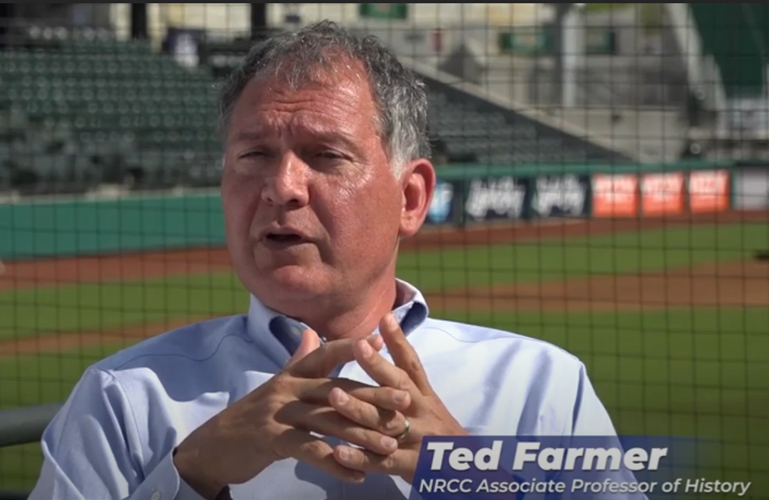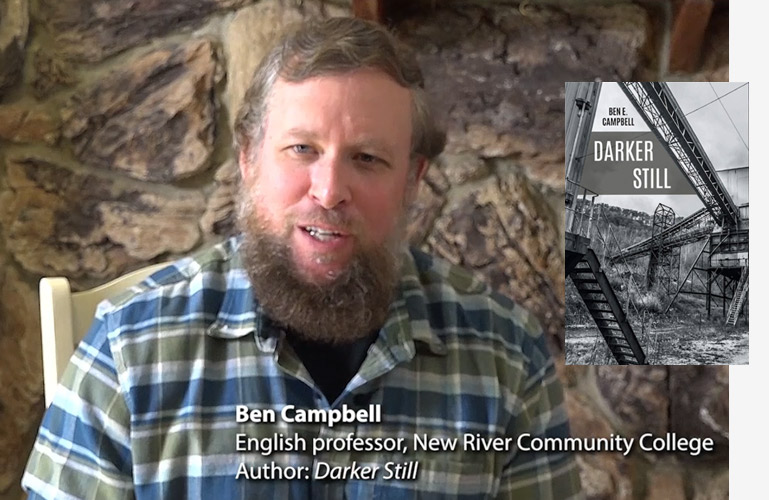
Introducing The Blurb, a series of short videos where NRCC faculty and staff discuss topics related to their particular specialties. You’ll be amazed at how curious, passionate, and talented we are outside of the classroom!
By: Richard Hershberger
Baseball began as a schoolyard game, brought to America by the colonists. It evolved rapidly over the second half of the nineteenth century, with innovations and rule changes continuing throughout the twentieth century and into the modern era. But why and how did these changes take place? Richard Hershberger examines the national pastime’s development, from the reasoning behind new rules and innovations to the consequences of these changes—both intended and unintended—that often led to a new round of modifications. Topics examined include the dropped third strike, foul territory, nine innings, tagging up, balls and strikes, tie games, equipment, the infield fly rule, and many more.
By: Lawrence D. Hogan
For 100 years, African Americans were barred from playing in the premier baseball leagues of the United States—where only Caucasians were allowed. Talented black athletes until the 1950s were largely limited to only playing in Negro leagues, or possibly playing against white teams in exhibition, post-season play, or barnstorming contests—if it was deemed profitable for the white hosts. Even so, the people and events of Jim Crow baseball had incredible beauty, richness, and quality of play and character. The deep significance of Negro baseball leagues in establishing the texture of American history is an experience that cannot be allowed to slip away and be forgotten. This book takes readers from the origins of African Americans playing the American game of baseball on southern plantations in the pre-Civil War era through Black baseball and America's long era of Jim Crow segregation to the significance of Black baseball within our modern-day, post-Civil Rights Movement perspective.
By: George Vecsey
[This book] is a narrative of America’s can-do spirit, in which stalwart immigrants such as Henry Chadwick could transplant cricket and rounders into the fertile American culture and in which die-hard unionist baseballers such as Charles Comiskey and Connie Mack could eventually become the tightfisted avatars of the game’s big-money establishment. It’s a celebration of such underdogs as a rag-armed catcher turned owner named Branch Rickey and a sure-handed fielder named Curt Flood, both of whom flourished as true great men of history. But most of all, Baseball is a testament to the unbreakable bond between our nation’s pastime and the fans, who’ve remained loyal through the fifty-year-long interdict on black athletes, the Black Sox scandal, franchise relocation, and the use of performance-enhancing drugs by some major stars. Reverent, playful, and filled with Vecsey’s charm, Baseball begs to be read in the span of a rain-delayed doubleheader, and so enjoyable that, like a favorite team’s championship run, one hopes it never ends.
Written and illustrated by: Kadir Nelson
Featuring nearly fifty iconic oil paintings and a dramatic double-page fold-out, an award-winning narrative, a gorgeous design and rich backmatter, We Are the Ship is a sumptuous, oversize volume for all ages that no baseball fan should be without. Using an inviting first-person voice, Kadir Nelson shares the engaging story of Negro League baseball from its beginnings in the 1920s through its evolution, until after Jackie Robinson crossed over to the majors in 1947. The story of Negro League baseball is the story of gifted athletes and determined owners, of racial discrimination and international sportsmanship, of fortunes won and lost; of triumphs and defeats on and off the field. It is a perfect mirror for the social and political history of black America in the first half of the twentieth century. But most of all, the story of the Negro Leagues is about hundreds of unsung heroes who overcame segregation, hatred, terrible conditions, and low pay to do one thing they loved more than anything else in the world: play ball.
By: Bill Madden
1954, A triumphant season for black ballplayers and the country. Award-winning New York Times bestselling author Bill Madden delivers the first major book to fully examine the 1954 baseball season, drawn largely from exclusive recent interviews with the major players themselves, including Willie Mays and Larry Doby as well as New York baseball legends from that era: Yogi Berra and Whitey Ford of the Yankees, Monte Irvin of the Giants, and Carl Erskine of the Dodgers. 1954 transports readers across the baseball landscape of the time as future superstars such as Hank Aaron, Ernie Banks, and others entered the leagues and continued to integrate the sport. Weaving together the narrative of one of baseball's greatest seasons with the racially charged events of that year, the same in which the US Supreme Court unanimously ruled that segregation of the races be outlawed in America's public schools, 1954 demonstrates how our national pastime was actually ahead of the curve in terms of the acceptance of black Americans, while the nation at large continued to struggle with tolerance.
By: Rusty Whitener
For twelve-year-old Zack Ross, life revolves around Little League. The 1971 season is his last chance to win the championship and with the help of a new power hitter named Rafer, that just might happen. Though Rafer is a little different, he can hit a baseball farther than Joe DiMaggio, and Zack knows that’s exactly what the Robins need to win it all. As the season gets underway, it seems like nothing—not Rafer’s differences, the war in Vietnam, or the attention of a girl named Rebecca—will deter Zack and his team from their goal. But little by little, Rafer begins to make an impression on them all, giving them small gifts that seem awkward at first but are soon overshadowed by a gift they never saw coming—a miracle in the making. When Rafer is suddenly hospitalized, the team bands together, determined to stand by their new friend, determined to win the trophy in his honor. Larger questions of faith and love trouble Zack’s mind, but in the end, he will see there’s more to life than winning or losing.
Edited by: Curt Smith and the National Baseball Hall of Fame and Museum
For some people baseball means a memory-of a certain dusty ball field on a certain summer day, or the first time they walked into a major league park and saw the perfect emerald playing field. For some, baseball means one heartbreaking or heroic moment. And for others, it means a father, a friend, or an old flame who shared a game for a day or for a lifetime. To create this marvelous book, more than 150 writers, athletes, celebrities, politicians, presidents, and pundits were asked what baseball means to them. The answers came back with richness, wonder, insight, and poetry. A fascinating portrait of baseball's beautiful nuances, What Baseball means to me marks the greatest collection of original essays ever written about the game. Accompanied by more than 200 classic baseball photographs, the voices in this book bring alive the game in all its venues-in the past and present, in wartime and hard times, in Cuba, in Wrigley Field or Yankee Stadium.
By: Grace Toney Edwards, JoAnn Aust Asbury, and Ricky L. Cox
A Handbook to Appalachia comprises a collection of concise, accessible overviews of the region written by top academics in a variety of fields, all directed at a general audience. Accompanied by dozens of inviting photographs, the essays offer information to those becoming acquainted with Appalachia for the first time as well as to more experienced observers of the region.
By: Tom Hansell
“What happens when fossil fuels run out? How do communities and cultures survive? After Coal focuses on coalfield residents who chose not to leave, but instead remained in their communities and worked to build a diverse and sustainable economy.
By: Tom Butler and George Wuerthner
The Appalachian Mountain range is the oldest in the world and it's disappearing one mountain top at a time. Plundering Appalachia takes a bold look at the out-of-control strip mining in the American heartland and its threat to our environment.


